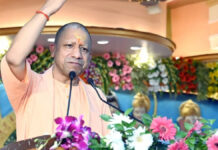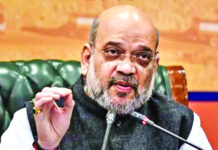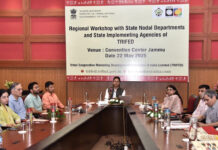Modi 2.0 can neither ignore the temple demand given its moorings, nor can it risk its sabka vishwas legacy
Many among us would be sad if the much-politicised Ayodhya issue cannot be settled over mediation and becomes a subject of another round of legal to and fros and point-scoring instead. But that would be looking at it rather superfluously, though it would undoubtedly be an ideal solution. Given its gravitas in the body politic and a hold of our national consciousness, particularly to the Hindu identity, which is on the ascendant post the recent Lok Sabha verdict, the temple is expected to be the culmination of an iconisation process. And about setting a historical benchmark. Still, ignoring opposition from Hindu organisations, except the Nirmohi Akhara, on the ground that earlier attempts of reaching a compromise had failed and that it was an emotional issue that needed closure, the Supreme Court did give a chance to talks. But considering there is no clarity yet from the three-member panel, comprising spiritual guru Sri Sri Ravi Shankar, Justice (Retd) FM Kalifulla and senior advocate Sriram Panchu, which had to deliver within a timeline, looks like this is another missed opportunity.
Factoring in the sensitivities of the case and the pressure on the ruling Bharatiya Janata Party (BJP) to bring about an ordinance before the elections, the Supreme Court had ordered mediation to dissociate Ayodhya from the considerations of electoral politics. In that sense, the exercise was more of a breather to the BJP, which, unsure of the subsequent verdict it got in May, didn’t want to be seen as a party whose hands were forced on the subject. Even during the mediation process, on-ground reports had suggested that both sides were equally adamant about their stated positions and were not willing to yield an inch to the other. For both the Muslims and Hindus, compromise equals climbdown when it comes to the legitimacy of the mosque and temple. But as the court said, the past cannot be undone and the only option was to take things forward. For the Hindu right-wing, which has based its claim to political legacy on the temple, it cannot afford to water down Ayodhya, the starting point of its pan-India efflorescence. And now that majoritarianism has been legitimised by a big verdict, even the BJP has no option but to address its core constituency. For it has derived only incremental advantages from what was once an upper-caste concern to a mainstream heartland plank. Though the rath yatra by veteran BJP leader LK Advani laid the foundation of the movement, it was not until the demolition of the mosque that the construction of the Ram temple wrested the pan-India narrative. So, BJP will never be able to settle for half measures on the mandir issue though the traction has been diminishing over the years — the last being an almost empty session on the subject at the Kumbh mela — compelling even RSS chief Mohan Bhagwat to declare that the subject should be taken up after the general elections. The temple even failed to create a ripple effect in last year’s bypolls and Assembly elections in the heartland states, considering its supporters were mostly concentrated here. Except the Shiv Sena, which has been keeping the pressure on the government and pointing out that the dispute is about 1,500 sq ft land and not about the remaining 63 acres, and Uttar Pradesh Chief Minister Yogi Adityanath’s promises, there wasn’t much traction on the subject pre-election. Then the Pulwama terror attacks and the Balakot airstrikes gave a nationalist and pan-India surge that not only shored up Prime Minister Modi’s ratings but afforded him an opportunity to delay his Ayodhya strategy instead of giving in to the pressure of issuing an ordinance from ideologues and the larger Sangh Parivar. Although Modi had then clarified that any discussion on Ayodhya would be considered only after the judicial process was over, it is now, with the BJP’s own massive majority, that he is expected to take an imponderable step to ensure temple construction. Truth be told, the Ayodhya land issue itself may be a lesser irritant but it is the slogan of “Jai Shri Ram” that it has inspired that has acquired greater potency, sometimes used as a political slogan against the Bengal government, at other times as a fringe justification for rakshak lynchings. It is this delicate balance between a political necessity and a burden that the Modi 2.0 Government has to negotiate. Moreover, can it get past the obstinacy on the matter?





























